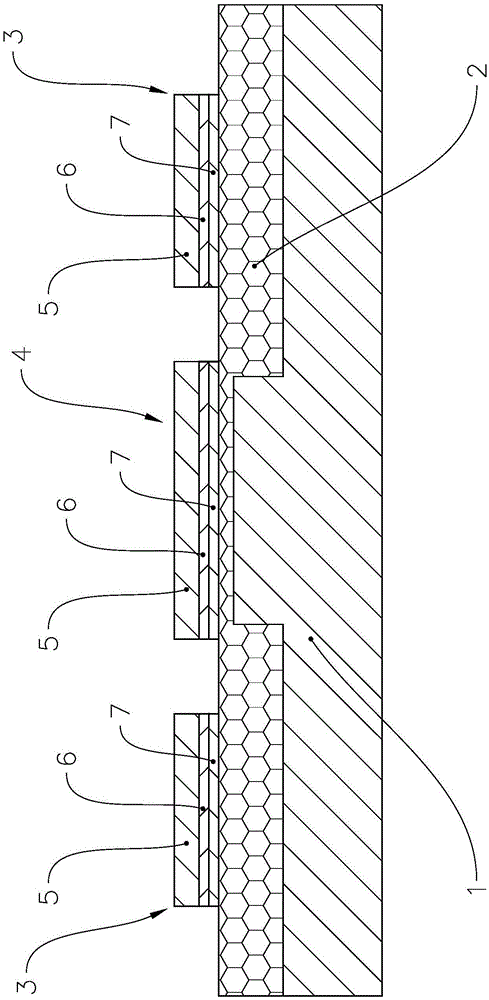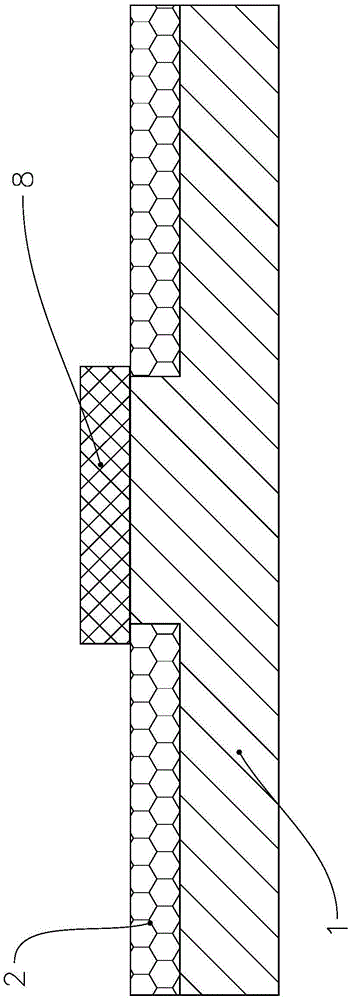High-thermal conductivity metal substrate, fabrication method thereof, LED module and fabrication method of LED module
A heat-conducting metal plate and metal substrate technology, applied in semiconductor devices, lighting and heating equipment, semiconductor devices of light-emitting elements, etc., can solve the problems affecting the quality of LED modules, low bonding force, etc., to speed up the efficiency of mass industrial production , Increase adhesion and ensure the effect of heat dissipation
- Summary
- Abstract
- Description
- Claims
- Application Information
AI Technical Summary
Problems solved by technology
Method used
Image
Examples
Embodiment Construction
[0033] Such as figure 1As shown, the highly thermally conductive metal substrate of the present invention includes a thermally conductive metal plate 1 , preferably, the thermally conductive metal plate 1 is an aluminum substrate. A part of at least one surface of the heat-conducting metal plate 1 is oxidized to form an oxidized insulating layer 2 , and a conductive pattern layer 3 and a heat-conducting pad 4 are formed on the oxidized insulating layer 2 . The insulating oxide layer 2 on the surface covered by the heat conduction pad 4 is thinner than the insulating oxide layer 2 on the surface covered by the conductive pattern layer 3 . Preferably, the thickness of the insulating oxide layer 2 on the surface covered by the heat conduction pad 4 is 3 microns to 5 microns, and the thickness of the insulating oxide layer on the surface covered by the conductive pattern layer 3 is 35 microns to 50 microns. Wherein, the conductive pattern layer 3 and the heat conduction pad 5 bot...
PUM
| Property | Measurement | Unit |
|---|---|---|
| thickness | aaaaa | aaaaa |
| thickness | aaaaa | aaaaa |
| thickness | aaaaa | aaaaa |
Abstract
Description
Claims
Application Information
 Login to View More
Login to View More - R&D
- Intellectual Property
- Life Sciences
- Materials
- Tech Scout
- Unparalleled Data Quality
- Higher Quality Content
- 60% Fewer Hallucinations
Browse by: Latest US Patents, China's latest patents, Technical Efficacy Thesaurus, Application Domain, Technology Topic, Popular Technical Reports.
© 2025 PatSnap. All rights reserved.Legal|Privacy policy|Modern Slavery Act Transparency Statement|Sitemap|About US| Contact US: help@patsnap.com



